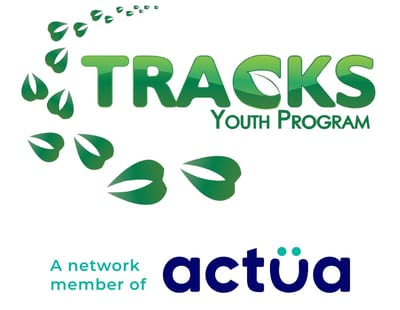How to raise Monarch Caterpillars and Support our Memengwaag!
Conservationists, environmental educators, and hobbyists around Turtle Island have been captive rearing caterpillars to help support them into adulthood. Raising caterpillars is a straightforward and rewarding opportunity. It is a wonderful chance for young and old to gain a greater appreciation for our winged relatives and see the beauty of metamorphosis up close and personal and help support their populations.
The number one way to help butterflies strengthen their populations is to plant pesticide-free native species. First and foremost, having food sources are key for supporting memengwaag. You can rear thousands of butterflies, but if there is no food sources for them then their populations will remain weakened. Planting key species that butterflies like, especially native species will help all our pollinator relatives and enhance their survival rates.
Step One: Plant a Native Species Garden If you are interested in helping memengwaag, the most important thing you can do is support them in their natural environment. Planting native species, especially wildflowers will ensure that they have access to appropriate food sources. The main reason for population declines in memengwaag is the lack of safe food sources. Planting native species, especially species that are favoured by memengwaag will support their wild populations as well as the populations you can rear. Here are two great resources for picking appropriate species for your butterfly garden
https://ofnc.ca/programs/fletcher-wildlife-garden/make-your-own-wildlife-garden/gardening-for-butterflies
https://nababutterfly.com/butterfly-garden-plants/
Step Two: Create your structure Creating a caterpillar habitat can be constructed in many different ways. The most important components are the ability for the caterpillars to have adequate airflow, access to food, and room to move around. Creating a structure first is a good idea as you will be prepared for the arrival of the caterpillars. The picture shown here is an old bookcase that has the shelves removed. Screen has been permanently secured to the back side. The front has a removable screen attached by Velcro. Caterpillars are escape artists so finding the balance between easy access to habitat and security is key. Creating a structure that can be outside and exposed to as much natural elements that caterpillars would normally encounter is also important. Captivity can have some impacts on the resiliency of the caterpillars, so ensuring that they are protected but as exposed to their natural habitat is very important for their survival.
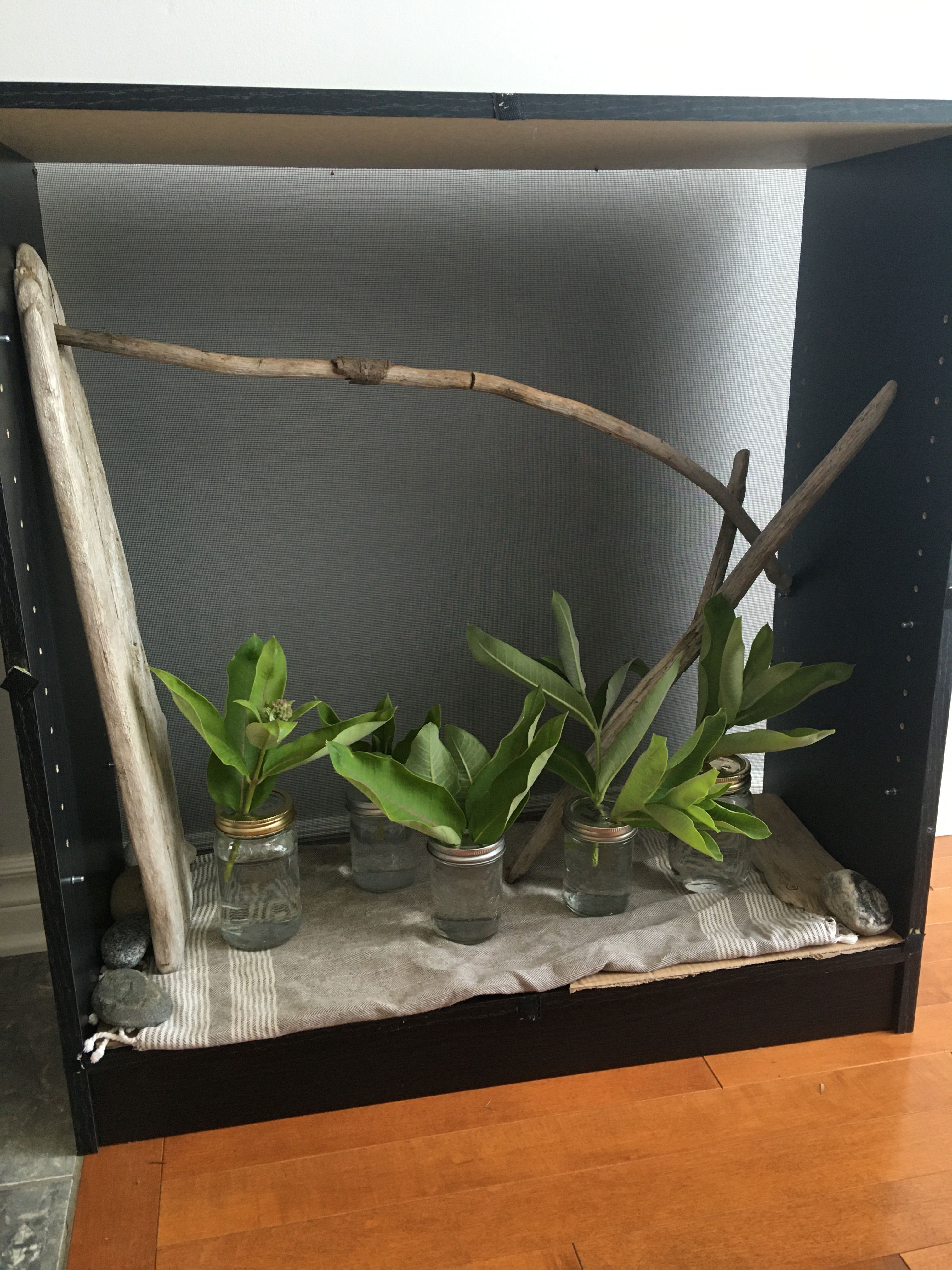
Step Three: Finding you Caterpillars Planting a large pesticide-free wildflower garden is a great way to attract butterflies, as stated in step one. The easiest way to find caterpillars is to look for or plant their favourite species. Here is a list with the favourite food source of various butterfly species. Taking animals out of the wild should be done so with respect, knowledge and caution. If you are not able to have enough food or space for the caterpillars only take the amount that you can appropriately care for. In an ideal world, we would not have to remove any caterpillars from the wild, as this is the best place for them to live. That being said, predation does pose a risk, so respectfully rearing caterpillars can be a way to support their conservation.
| Milkweed Spicebush Paw-Paw Parsley, Dill, Fennel Walnut, Sweet Gum Cherry | Monarch Butterfly Spicebush Swallowtail Zebra Swallowtail Black Swallowtail Luna Moth Cecropia Moth, Viceroy, Red-Spotted Purple |
Step Four: Appropriate Food sources If you are creating a caterpillar habitat researching what food sources each species needs is critical to their survival. Swallowtail caterpillars love to eat parsley and dill while monarch caterpillars will only eat milkweed. Adding food sources to your habitat can come from adding a potted plant that is appropriate for the caterpillar species or adding plant cuttings to water. The 2021 group of monarch caterpillars at TRACKS were feed by milkweed cuttings. To create a structure that can hold the cuttings, a mason jar was used with a hole drilled into the lid, so the cutting could stay upright. Collecting plants and cutting from the area where the caterpillars were found is also key. Milkweed can have different levels of toxicity, so collecting milkweed where you have found the caterpillars is a very good idea.
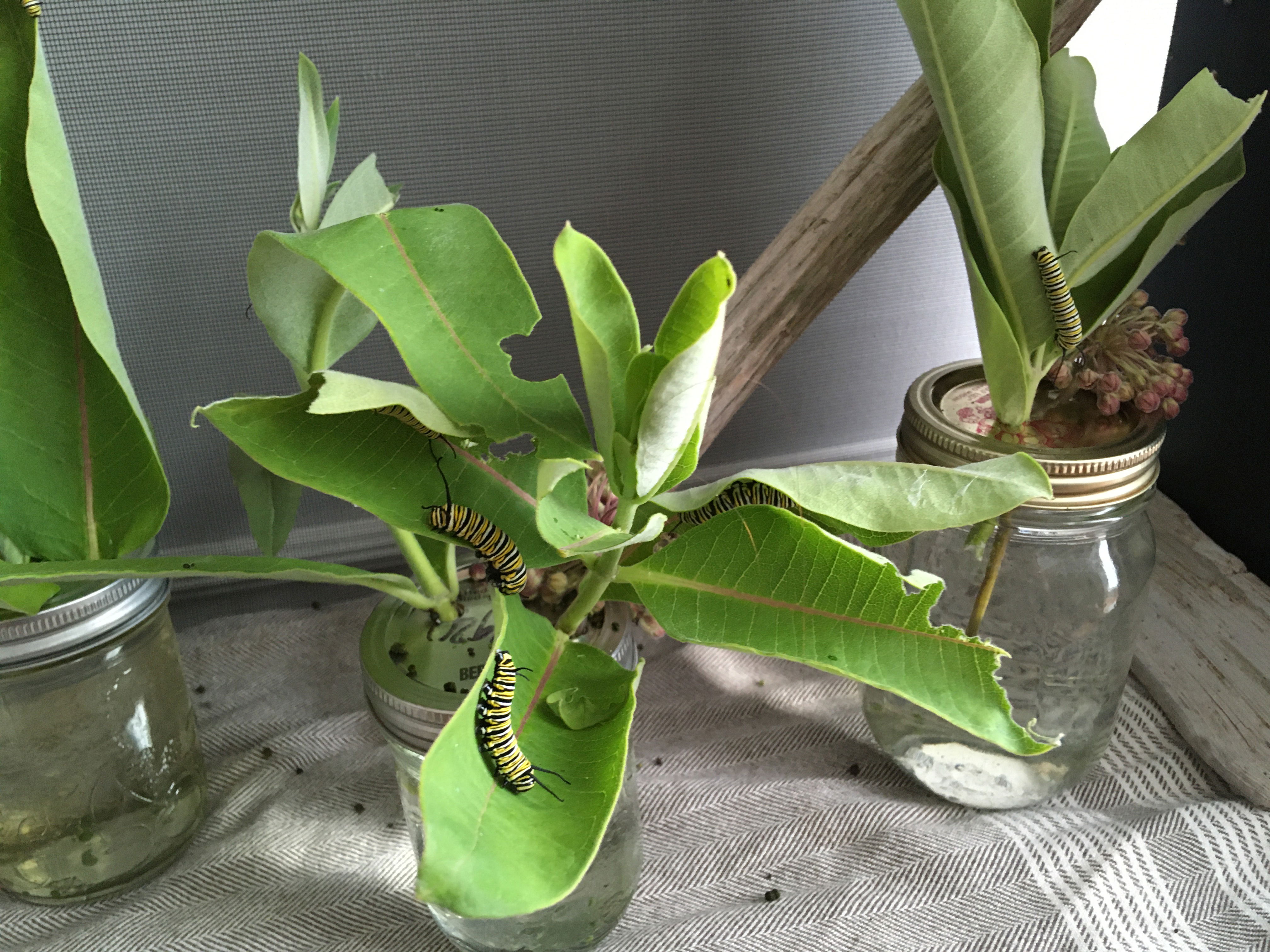
Step Five: Maintaining the habitat Caterpillars eat often and create quite a mess with their poop. Depending on the amount of caterpillars and the size of their enclosure, you may need to clean once a day. Ensure that there is also enough food for the caterpillars as their appetites increase as they grow larger.
Step Six: Enjoy the transformation The caterpillar stage is shorter than you may think. Ensuring there are twigs, branches or areas for the caterpillars to create a chrysalis is very important. In the photo shown here, the caterpillars opted for the top of the book shelf rather than the twigs in the habitat. Watching pupation ( transformation from caterpillar to pupa) is an incredible experience. Taking a photo, video, journaling or drawing the experience can help enjoy and share this experience.
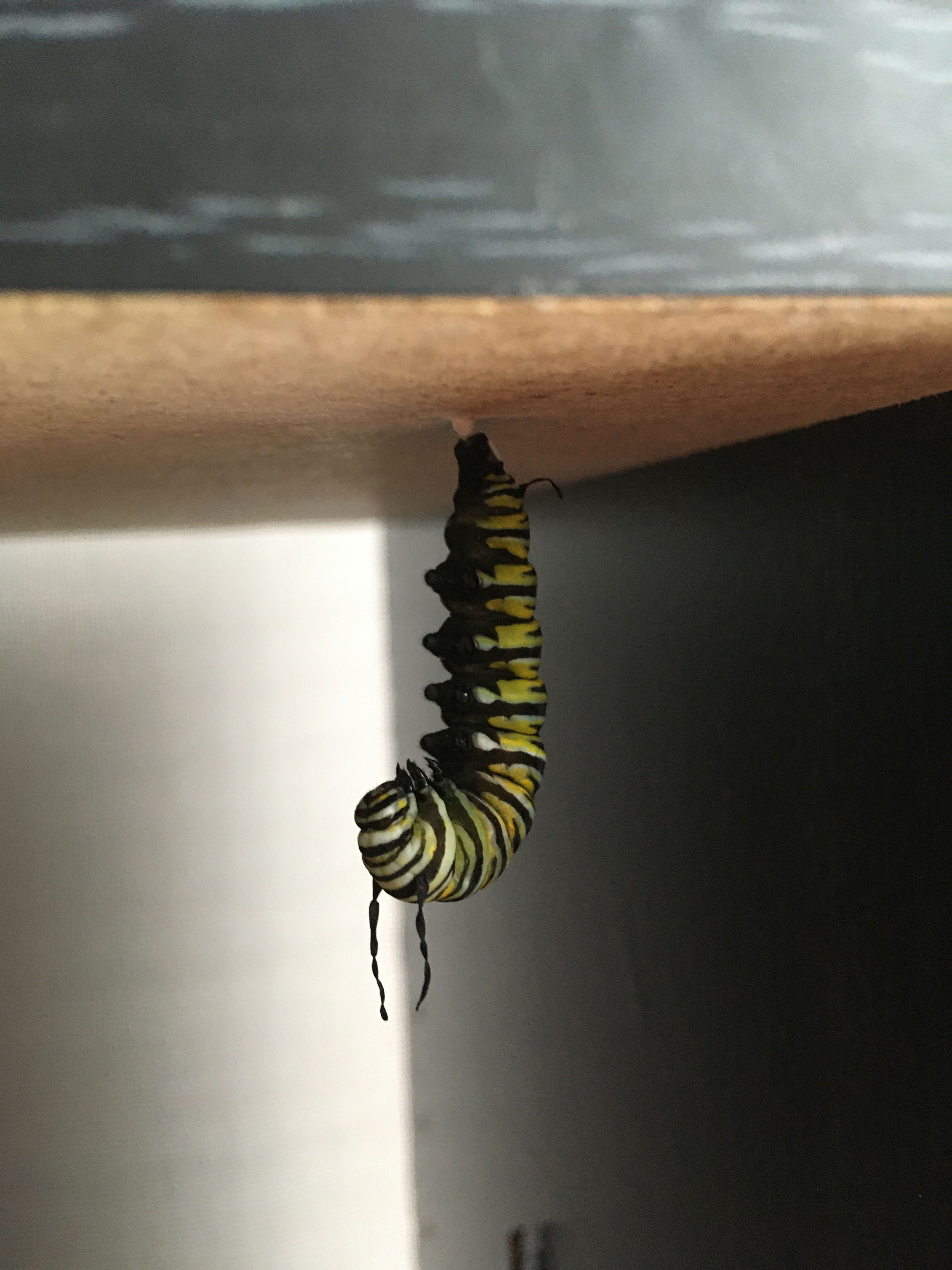
Step Seven: Ready for the Memengwaag Once the caterpillars have turned into chrysalis, you can remove the plants they were eating. You want to make sure that when the butterflies emerge there is enough room for them to move around. Moving sticks or twigs out of the way is a good idea, as shown in this picture. Some chrysalis like the monarch’s indicate when they will be emerging. Adding a plant for them to land on to dry their wings will ensure they are able to survive. Drying wings often lasts 24 hours. Placing a pesticide-free flower in the habitat will also offer the butterfly something to eat.
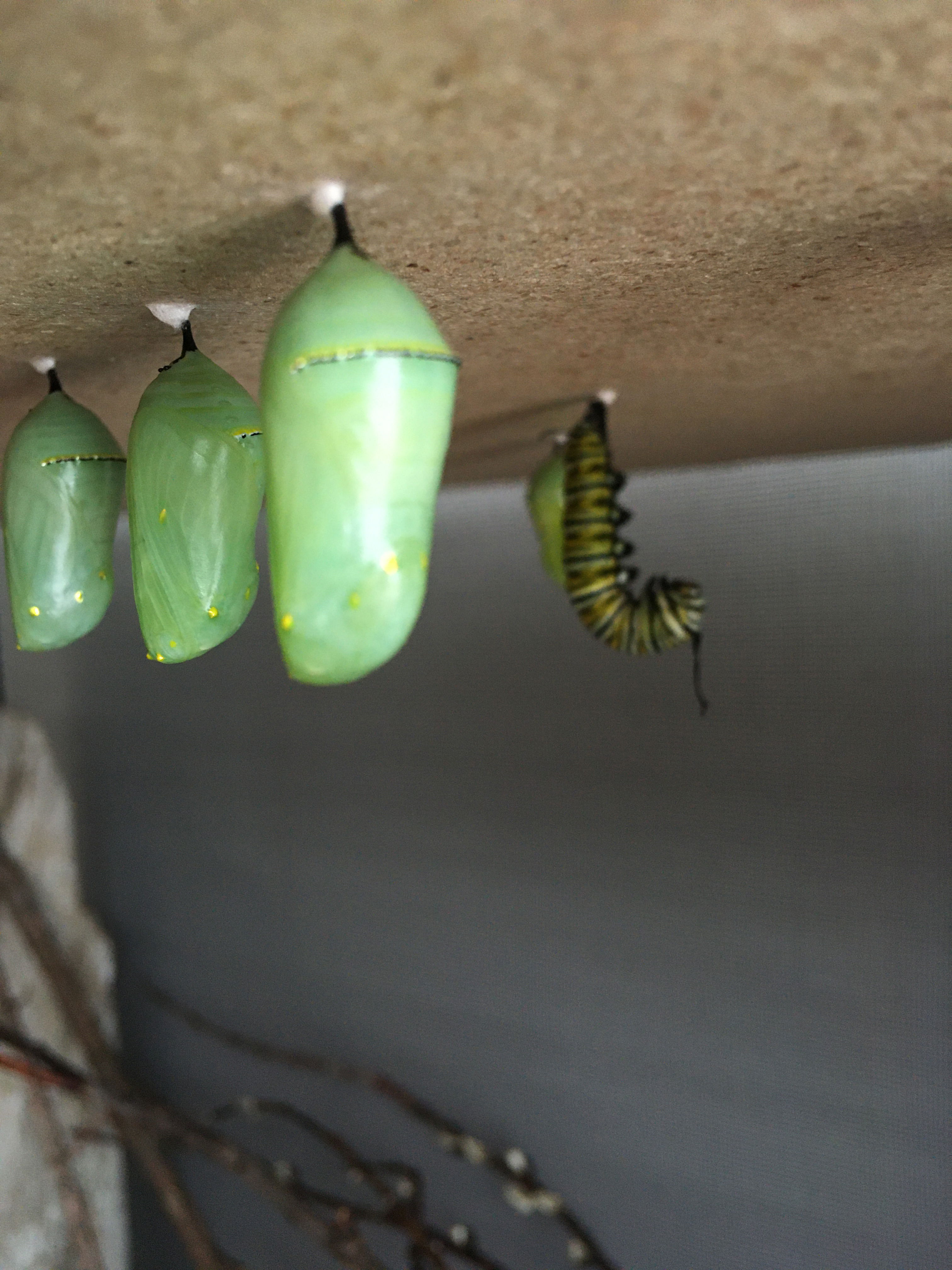
An important note is that they may not all survive until adulthood. If you are able to follow the steps and created a good habitat and planted native species, then you have done a great job in supporting Memengwaag!
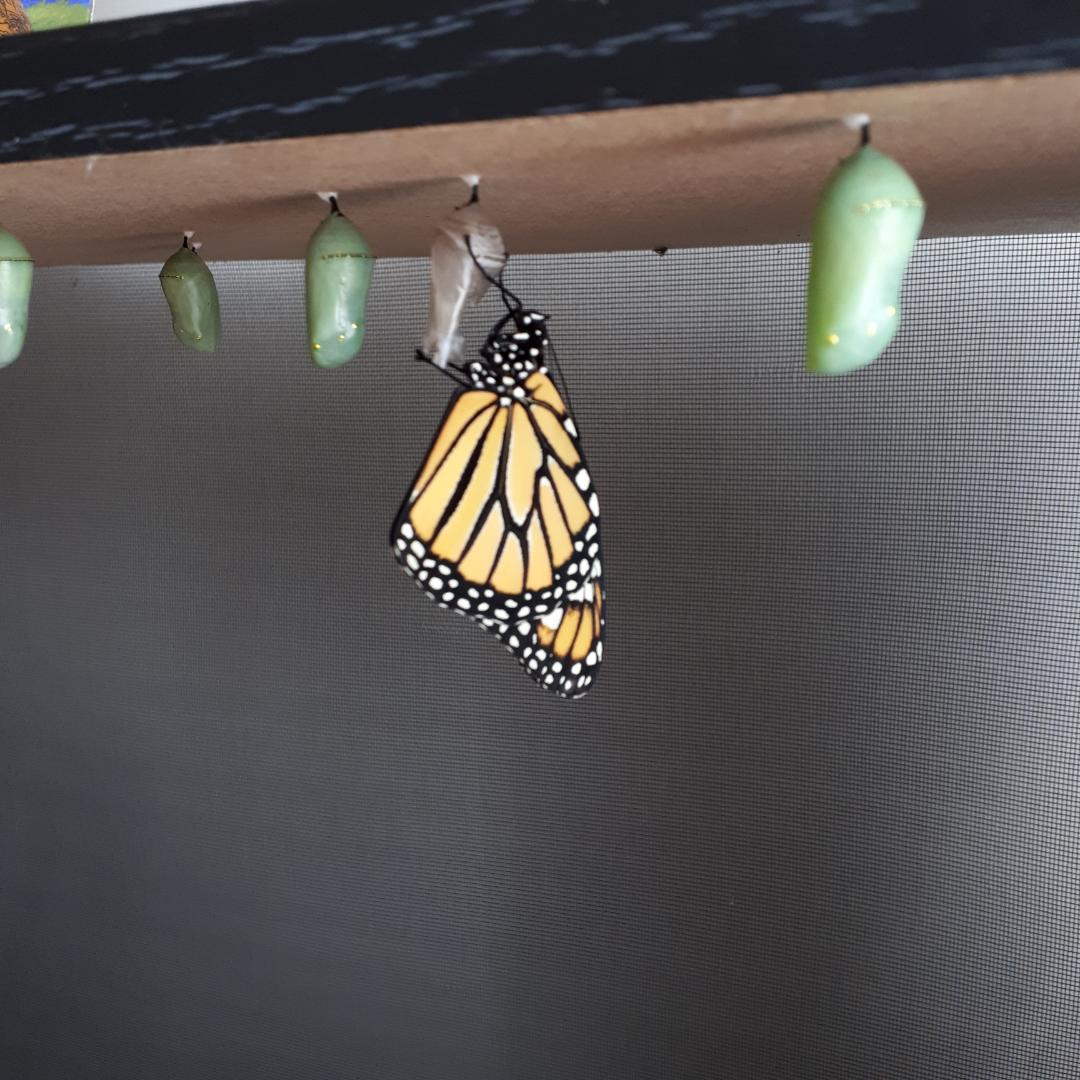
Step Eight: Release the Memengwaag After 24 hrs from when the Memengwaag emerged is the ideal time to release them. If you cannot release them due to time of day or weather, ensure they have flowers to drink from. In the morning on a sunny day is ideal for release. If you have found the Memengwaag in a field or in your garden, this is the best place to release them. If your habitat is outside you can open the door or flap to release them. If they are inside, carefully hold them with their wings closed and release them in the garden or meadow where you found them.
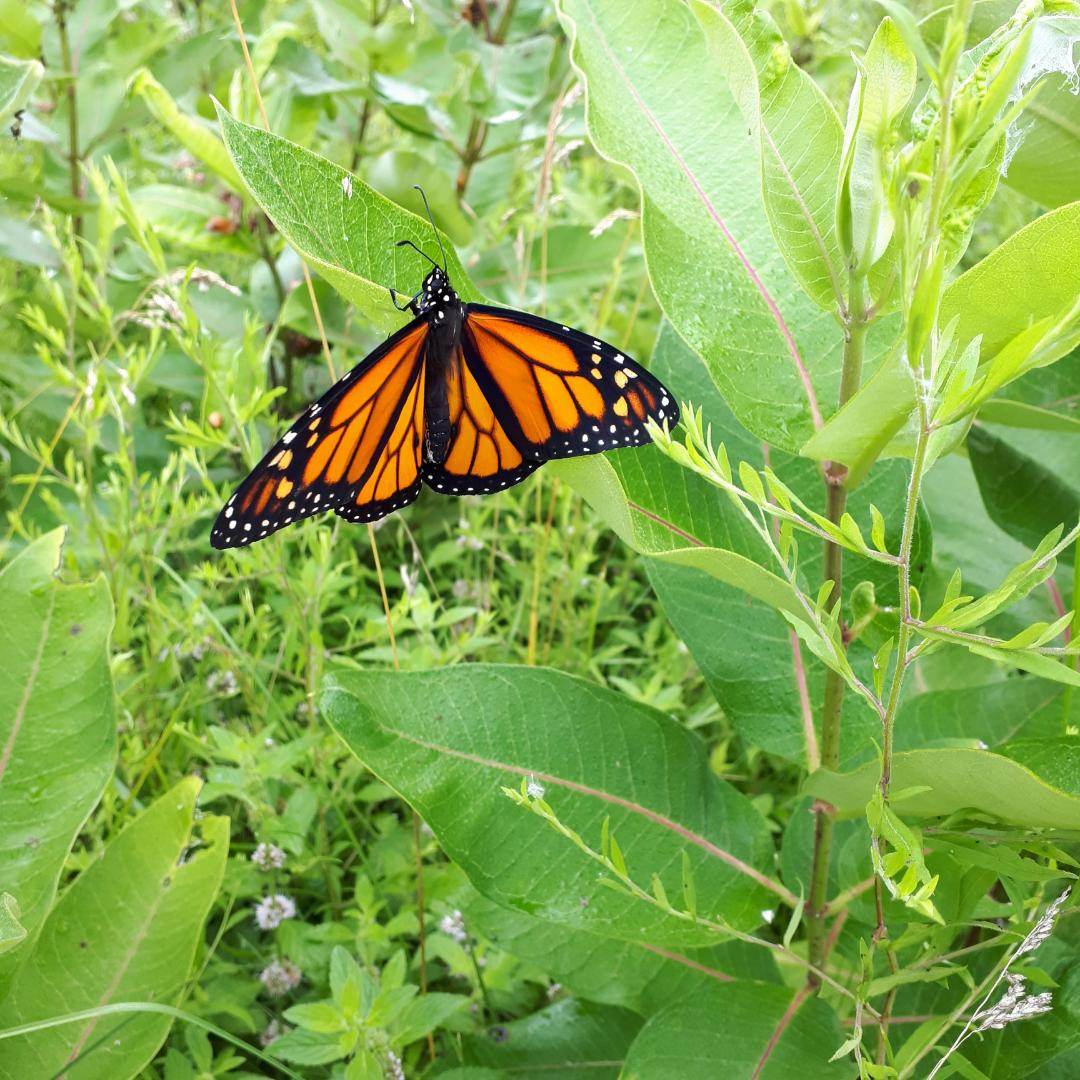
Here is a great guide to learning how to safely rear Memengwaag and things to consider when doing so: https://monarchjointventure.org/images/uploads/documents/Monarch_Rearing_Instructions.pdf
If you would like to learn more about the possible risks and impact of captivity rearing Memengwaag please read this article https://academic.oup.com/conphys/article/9/1/coab032/6274228#247699231
